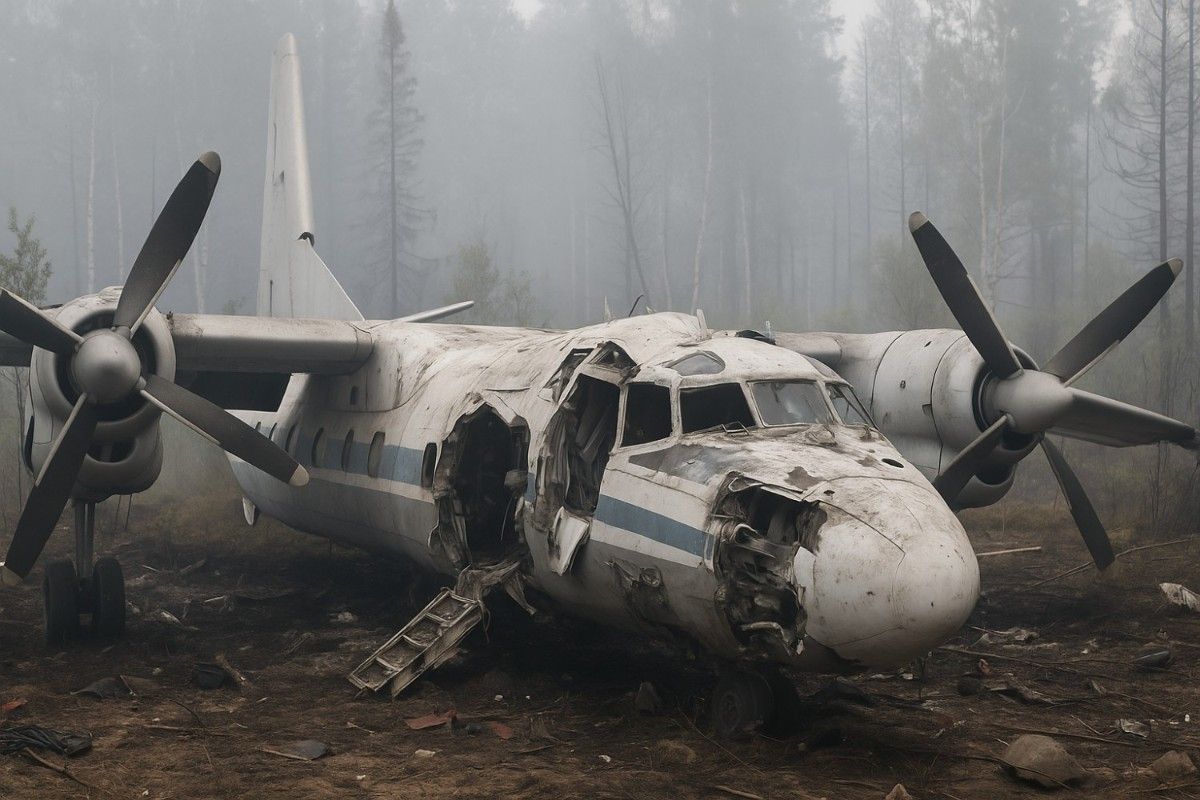In a heartbreaking aviation disaster, a Russian plane carrying 49 people crashed while en route to Tynda, a city in the Amur region near the Chinese border. The ill-fated An-24 passenger aircraft, operated by Angara Airlines, lost contact with air traffic control (ATC) before disappearing from radar. Tragically, all onboard have been confirmed dead.
The regional governor, Vasily Orlov, stated that the Russian plane was carrying 43 passengers, including five children, and six crew members. The aircraft was on its way to Tynda from a nearby city when it vanished. A massive search operation was launched following the loss of communication, and emergency teams later discovered wreckage confirming the worst-case scenario.
According to Russia’s Emergency Services, there were no survivors. The crash marks one of the deadliest Russian plane accidents in recent years and has raised fresh concerns about the safety protocols of domestic airliners operating in remote regions.
The SHOT news outlet reported that the Angara Airlines flight disappeared from radar screens shortly before it was scheduled to land. Initial reports suggest that the aircraft made one unsuccessful attempt to land at Tynda Airport. During the second attempt, it lost contact with ATC, prompting immediate concern and emergency procedures.
Eyewitnesses in the Amur region reported seeing a low-flying aircraft followed by a loud explosion. Soon after, rescue teams were dispatched to comb through the thick forests and mountainous terrain in the region. Unfortunately, rough weather and poor visibility delayed the discovery of the crash site.
This Russian plane crash adds to a troubling pattern of aviation incidents in the region. Just last September, a Robinson R66 helicopter carrying three people also disappeared while flying in the Amur area. Authorities never recovered the missing helicopter.
Aviation experts have pointed out that harsh weather, aging aircraft, and minimal infrastructure in remote areas are major risk factors. The An-24 aircraft model involved in this accident is a Soviet-era turboprop, first introduced in the 1960s. While many units remain in service, their reliability has often been questioned.
Russian aviation authorities have launched a full-scale investigation into the crash. They will examine the flight data recorder, cockpit voice recorder, and wreckage to determine the exact cause. The airline has not commented yet, but sources suggest the pilot may have encountered engine failure or navigation issues during descent.
A senior official from Russia’s Civil Aviation Authority said the Russian plane likely suffered technical malfunction mid-air. However, they have not ruled out human error or adverse weather conditions. All these angles will be explored in the formal investigation.
Meanwhile, families of the victims have gathered at Tynda Airport, devastated and demanding answers. Local officials are working closely with grief counselors to provide emotional support. Flags across the Amur region have been lowered, and a day of mourning has been declared.
International aviation bodies are also observing the situation. The International Civil Aviation Organization (ICAO) has offered technical support for the crash investigation. Safety in regional flights has become a growing concern globally, especially in harsh terrains like eastern Russia.
This tragic Russian plane accident also recalls the recent Ahmedabad aviation incident in India, where an Air India Boeing 787-8 crashed shortly after takeoff. In that case, a malfunction in the fuel control switch led to the engine shutting down mid-flight. That crash claimed 270 lives, including those on the ground.
In both accidents, the issue of aging aircraft and maintenance lapses is being hotly debated. In Russia’s case, the continued use of older Soviet-era planes in commercial aviation is increasingly controversial. Many aviation analysts are calling for a comprehensive review of fleet safety and operational standards.
Angara Airlines, a small regional carrier, primarily serves remote areas of eastern Russia. The airline has previously maintained a decent safety record, but this crash will put its practices under intense scrutiny. The airline is cooperating with authorities and has grounded its An-24 fleet pending inspections.
The Russian plane disaster also sheds light on the challenges of aviation in remote and underdeveloped regions. Infrastructure limitations, outdated equipment, and slow emergency response times can turn minor issues into catastrophic tragedies.
In a press statement, Russia’s Transport Ministry expressed deep condolences to the families of the victims. It also promised to take strict action based on the investigation findings. President Vladimir Putin has been briefed on the situation and is closely monitoring the investigation.
Meanwhile, aviation authorities in neighboring countries have issued safety alerts. China, which shares a border with the Amur region, has increased monitoring of cross-border air traffic. Several regional airlines are also reviewing their emergency protocols following the Russian plane crash.
Safety experts say modernizing fleets and improving pilot training in harsh-weather landings is crucial. The crash of the Russian plane near Tynda could become a pivotal moment in reshaping how Russia handles its regional aviation services.
As recovery crews continue to work at the crash site, the primary focus is on retrieving the remains and evidence that could explain what went wrong. For now, the country mourns another aviation tragedy, hoping this becomes a wake-up call for change.
This heartbreaking Russian plane incident underscores the urgent need for better safety infrastructure and more rigorous regulatory oversight. The skies must become safer, especially for those flying to the farthest and most inaccessible corners of the world.
